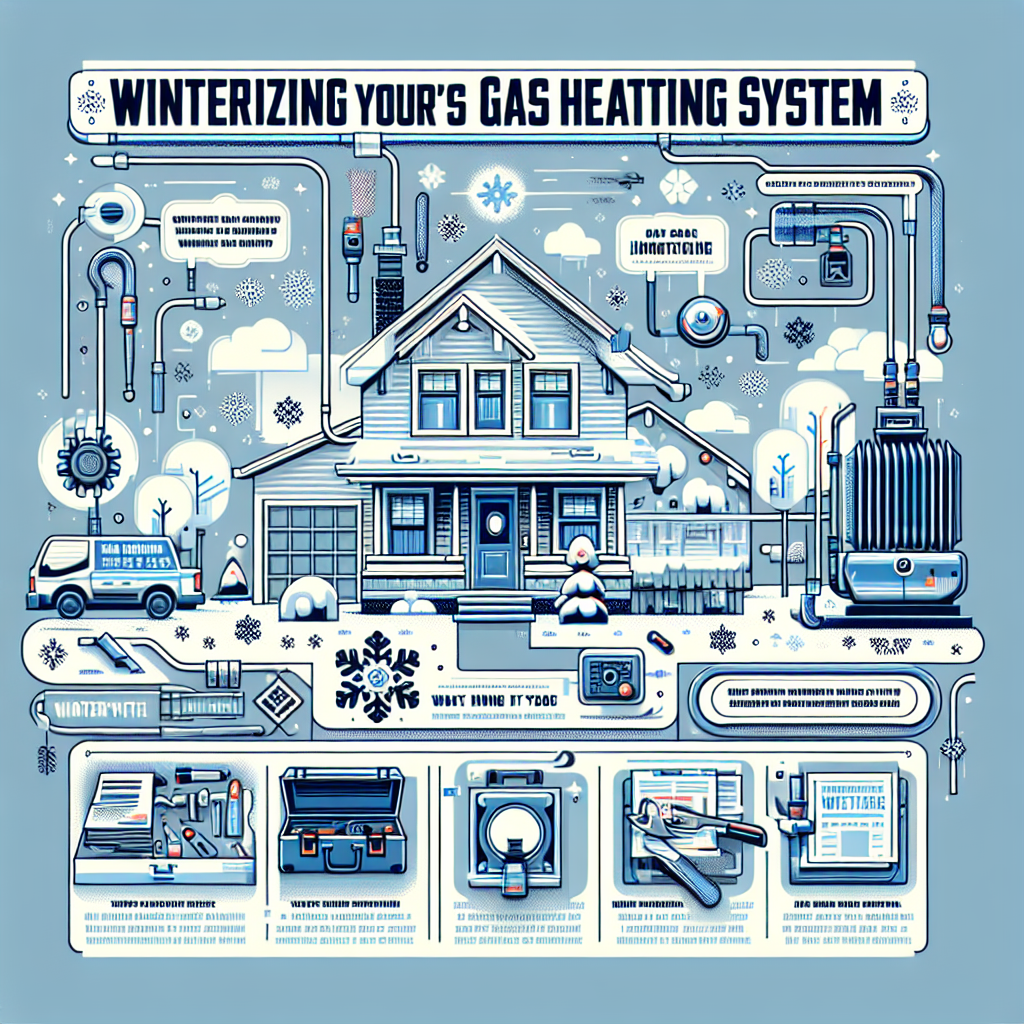As the cold months approach, ensuring your home is warm and comfortable should be a top priority. One of the most effective ways to do this is by properly winterizing your gas heating system. Not only will this help keep your household cozy, but it can also save you money on energy bills and extend the life of your system. In this article, we’ll walk you through the essential steps to prepare your gas heating system for winter and enhance its efficiency while ensuring safety.
Understanding the Importance of Winterizing
Winterizing your gas heating system is crucial for several reasons. First and foremost, it ensures your system operates efficiently, providing the warmth you need during the harsh winter months. Inadequate preparation can lead to significant breakdowns, higher energy costs, and even safety hazards such as gas leaks or carbon monoxide exposure. By taking proactive steps now, you can avoid costly repairs later.
Step 1: Schedule a Professional Inspection
Before winter sets in, schedule a professional inspection of your gas heating system. A qualified technician can assess the overall condition of your furnace, identify any potential issues, and perform necessary maintenance. This may include cleaning components, checking for leaks, and ensuring that all parts are functioning optimally. A thorough inspection gives you peace of mind knowing that your system is ready for the winter chill.
Benefits of Professional Maintenance
- Increased Efficiency: Regular maintenance ensures your heating system runs at optimum efficiency, reducing energy costs.
- Extended Lifespan: Investing in routine inspections can significantly extend the life of your heating system, saving you money in the long run.
- Safety Assurance: Professionals can identify safety hazards that you may overlook, including cracked heat exchangers or faulty gas lines.
Step 2: Change Air Filters
A vital yet often overlooked task is changing the air filters in your gas heating system. Clogged or dirty filters can significantly reduce airflow, making your system work harder to heat your home, which increases energy consumption and wear on the system. Change the filters according to the manufacturer’s recommendations, typically every 1-3 months during the heating season.
How to Change the Filter
- Turn off your furnace for safety.
- Locate the air filter, typically near the blower or return duct.
- Remove the cover and take out the old filter.
- Insert a new filter, ensuring it is oriented correctly (with the airflow arrows pointing towards the furnace).
- Replace the cover and turn your heating system back on.
Step 3: Inspect Ductwork and Vents
Leaky ducts and blocked vents can significantly impair the efficiency of your heating system. Take the time to inspect the ductwork for hidden leaks and ensure that vents are unobstructed by furniture or other items. Sealing leaks with duct tape or mastic can help your system operate more effectively and provide consistent heat throughout your home.
Tips for a Quick Duct Inspection
- Look for visible gaps or tears in the ductwork.
- Feel for drafts around ducts, especially at connections.
- Ensure all vents are open and unobstructed.
Step 4: Consider a Smart Thermostat
Investing in a smart thermostat can boost your heating system’s efficiency this winter. Unlike traditional thermostats, smart devices learn your heating preferences and adjust temperatures based on your schedule. This not only keeps your home more comfortable but can also lead to substantial savings on your energy bill.
Features of Smart Thermostats
- Remote Access: Adjust your thermostat from anywhere using a smartphone app.
- Energy Reports: Monitor your energy usage and receive tips for saving.
- Zoned Heating: Control different areas of your home separately for better efficiency.
Step 5: Test the System Before Use
Before winter fully sets in, run your heating system to ensure it’s functioning correctly. Turn the thermostat to heat and let the system run for a while, checking that the warm air flows effectively. Listen for unusual sounds or smells, as these may indicate issues that need addressing before winter.
What to Look For
- Unusual Noises: Grinding or squealing sounds may signify wear and tear or loose components.
- Uneven Heating: Rooms that are significantly colder than others could indicate ductwork issues or thermostat inaccuracies.
- Strange Odors: A burning smell can indicate dust burning off, but persistent or strong odors should prompt you to consult a professional.
Conclusion: Stay Warm and Safe This Winter
Winterizing your gas heating system is not just about comfort—it’s also a critical step in ensuring the safety and efficiency of your home. By following these essential tips, you can enjoy a warm, cozy winter while minimizing energy costs and extending the life of your system. Remember, regular maintenance and prompt attention to issues are the keys to a problem-free heating season. So, take the time now to prepare, and you’ll reap the benefits all winter long!


